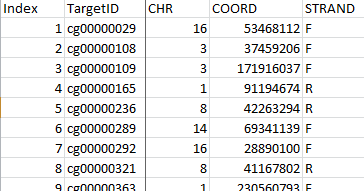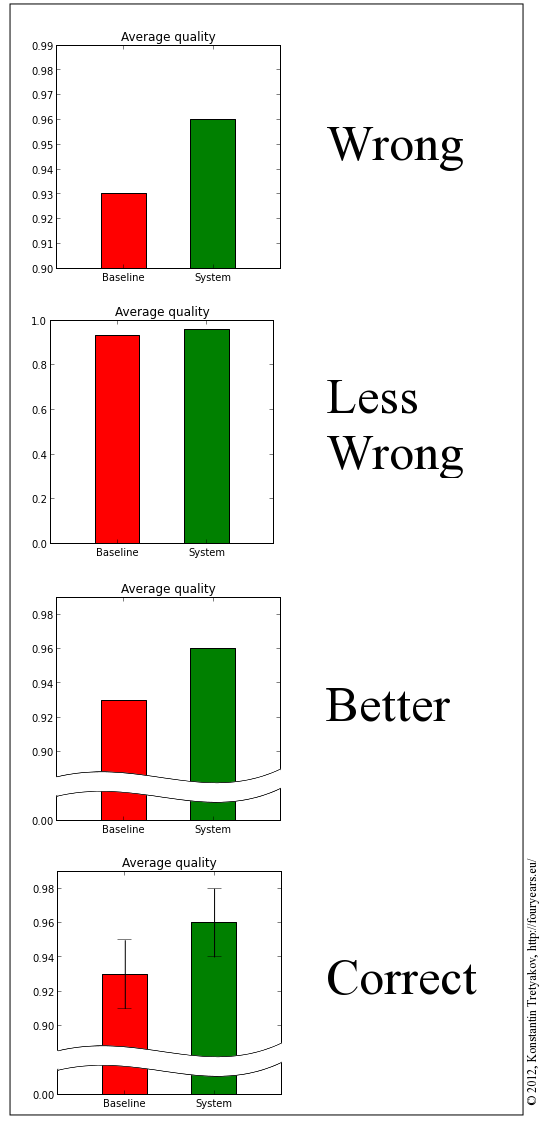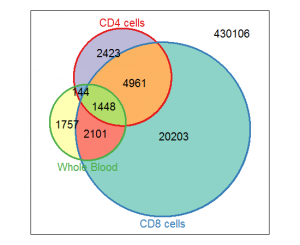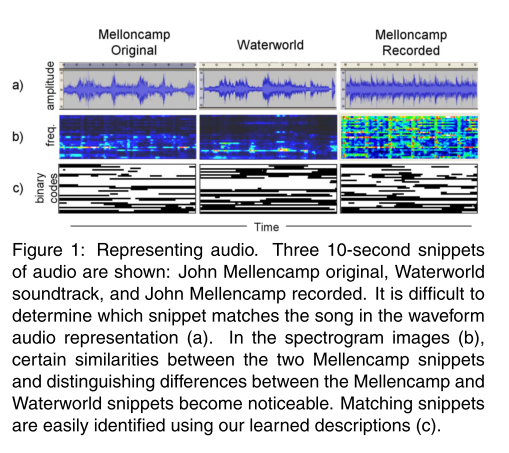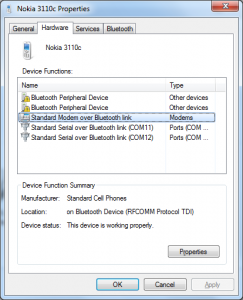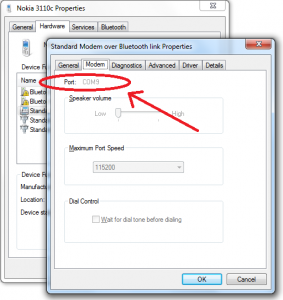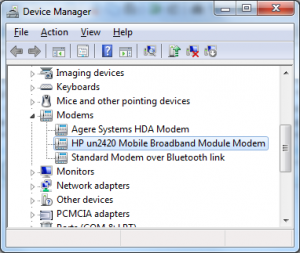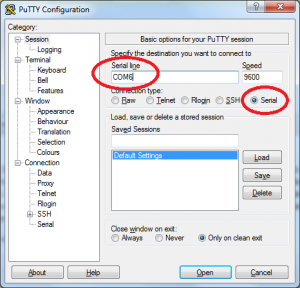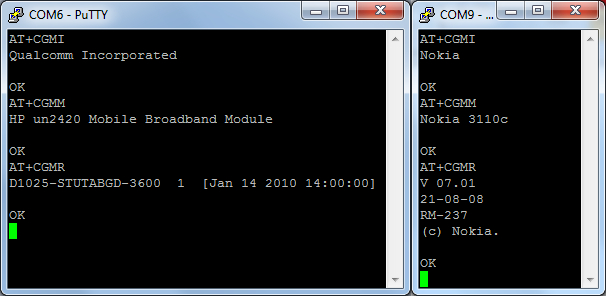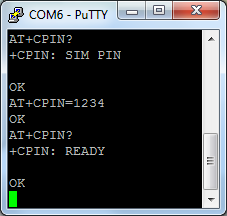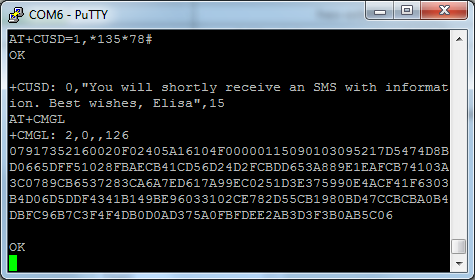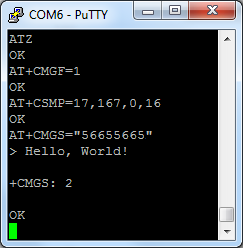Bitcoin is a cryptographic currency, that has gained a lot of hype in the last year. From a technical perspective, it is simply a distributed timestamping scheme, fully dedicated to establishing the order of monetary transactions, by creating a long block chain.
Adding a new block to the block chain requires extremely expensive distributed computations. Thus, in terms of the amount of energy, invested by the users worldwide into its creation, the block chain is, at the moment, probably the most expensive computer-generated file in human history. A monument to the raw "computation for the sake of computation". The Bitcoin network by now includes hundreds of thousands of users, most of whom keep a full copy of the block chain and contribute to its further growth.
All that means that including any information into the block chain can act as a solid timestamp, proving the existence of this information at a particular point in time. It is nearly impossible to fake or revoke. Even if the Bitcoin network would cease working, the block chain would probably be kept around at least as a curious artifact (as well as an object of interest for data miners) . The idea is equivalent to a popular practice of timestamping information by publishing it in a widely distributed newspaper. However, publishing in a popular newspaper may be costly, while getting transactions into the block chain is nearly free and accessible to anyone.
Consequently, it seems obvious that sooner or later the bitcoin block chain must begin to be used for timestamping things other than transactions. Because trusted timestamping is a big deal. Everyone in Estonia knows that.
Unfortunately, it seems that although the idea has been mentioned before, there do not seem to be any convenient services developed for that, apart from BTProof, which is somewhat too simplistic, given the potential importance of the task at hand. In an attempt to perhaps inspire someone to consider imlementing a more serious service of this kind, let me give a brief overview of the ways to get your data into the block chain.
Smuggling your data into the block chain
If only Bitcoin transactions were allowed to have textual descriptions assigned to them, the task would be trivial: any piece of information you want to timestamp could be simply mentioned in the description of a transaction. However, this functionality is not part of the Bitcoin protocol, so we have to use tricks. At least three different techniques are possible here.
1. Specifying your data as a destination address.
Each Bitcoin transaction includes a "destination address", which is a 34-character string in hex-like encoding. This address may be specified arbitrarily. Thus, by transferring any amount to an address, which itself is the hash of the information you need timestamped, you will have the fact of information's existence mentioned in the block chain for future generations to behold. This is the idea behind BTProof. There are several problems with this method. Most importantly, anything you transfer to a nonexistent address will get lost forever, with no one being able to claim it. This makes the process non-free, because you cannot have transactions of size 0. Moreover, very small transactions are unfavoured by the Bitcoin network and take a long time to get verified. Finally, leaving "unclaimed" transactions forever hanging in the block chain is somewhat indecent in the first place, isn't it?
The abovementioned drawbacks may be addressed using multi-signature transactions. Those are a special type of transactions, which allow the funds to be claimed by any one of several addresses. In this case one address can be used to encode the hash and another one — to reclaim the funds spent in the transaction back. This concept has been suggested as the way to carry arbitrary data on top of Bitcoin in the MasterCoin project.
2. Specifying your data as a destination private key.
Rather than converting the data you need timestamped into a (non-existent) address, you can turn it into a private key. You can then perform two transactions. The first one transfers funds to an address, corresponding to this private key, and next one uses the private key to withdraw the funds back to you. As there is a fixed mapping from your data to the private key to the address that the funds went through, you have just included a trace of your data into the block chain. This method is mentioned here. The drawback is the need for two transactions, and the overall complexity of the scheme.
3. Specifying your data in the script.
Finally, the last two places in a bitcoin transaction, which allow custom data, are the two "script" fields. Namely, the act of depositing funds to a transaction in Bitcoin is not as simple as providing the target address. Instead, it is a script, that, when executed, is supposed to check the right of the receiver to obtain the funds. Similarly, the act of withdrawing funds from Bitcoin is expressed by a script that proves the rights of the owner.
For example, a typical "deposition script" looks as follows:
OP_DUP OP_HASH160 OP_PUSHDATAx <target_address> OP_EQUALVERIFY OP_CHECKSIG
This script means that in order to withdraw the funds, the receiver must push on the stack a signature of the transaction, followed by his public key. The script then starts executing by first duplicating (OP_DUP) the top value on the stack, the public key. It then applies a hash function (OP_HASH160) to the top value on the stack (this converts the public key to an address). Then another value is pushed onto the stack (OP_PUSHDATAx). Next, two top values are popped and checked for equality (OP_EQUALVERIFY). This verifies, that the receiver's address matches <target_address>. Finally, the OP_CHECKSIG command pops another two values from the stack (those are the signature and the public key now, remember), and verifies the correctness of the signature.
The beauty of the system is that it lets you create various rules for claiming funds apart from simply owning a private key to an address. For example, it is possible to create transactions which require multiple parties to collude to withdraw them. Or you may require the receiver of the funds to solve a puzzle. Or you may even put the funds up for anyone to take freely, etc.
What is important for our purposes, however, is that the scripting language is rather flexible. In particular, it lets you add useless commands, such as "push this data onto stack, then drop the top value from stack, then continue as normal:"
OP_PUSHDATAx <any_data> OP_DROP OP_HASH160 OP_PUSHDATAx <target_address> OP_EQUALVERIFY OP_CHECKSIG
This logic could be included in either the "depositing" or the "receiving" script, letting you essentially provide arbitrary "notes" in transactions and thus do timestamp data in the most reasonable way. This lets you timestamp using a single transaction, which recurrently transfers any amount from an address to itself.
Unfortunately, it seems that the freedom of scripting has been severely limited in the recent versions of Bitcoin software. Namely, transactions with any nonstandard scripts are simply declined from inclusion into a block (at least, none of my attempts to try this out succeeded). Even the fate of multi-signature transactions, mentioned in point 1 (which are just a particular kind of a script) is not completely clear. In any case, the Bitcoin specification will most probably evolve to eventually allow storing dedicated data packets in the block chain without the need to resort to hacks. And if not Bitcoin, perhaps such functionality will become part of one of the competing similar cryptocurrencies.
It seems unreasonable to run a huge distributed timestamping algorithm, and not let people use it for general-purpose timestamping, doesn't it?
Update: Given the recent problems related to the transaction malleability aspect of the protocol, it is easy to predict that the freedom of scripting will probably be limited even further in the future. However, eventually support must be added for storing a custom nonce into the signed transaction (as it seems to be the only reasonable way to make transactions uniquely identifiable despite malleability of their hash). That nonce would be a perfect candidate for general-purpose timestamping purposes.

